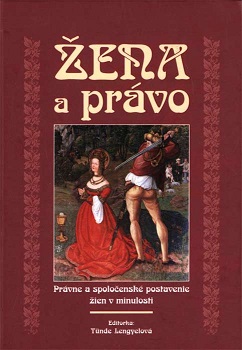Žena a zločin vo východoslovenských mestách v 16. storočí. Otázky, pramene, definície
Woman and Crime in Upper Hungarian Towns in the 16th century
Author(s): Blanka Szeghyová
Subject(s): Gender Studies, Geography, Regional studies, History of Law, Criminal Law, 16th Century
Published by: SAV - Slovenská akadémia vied - Historický ústav SAV
Keywords: Hungary; upper Hungarian towns; women; crime; criminal law; witchcraft; 16th century;
Summary/Abstract: History of crime and punishment is not a marginal history. Quite the opposite, by showing which kinds of behaviour were unacceptable and punishable by the law, judicial records reveal norms of behaviour imposed by society on men and women. The author addresses several questions: What were the most frequent and typical charges brought against women? How does it correspond to the criminality of men? Were women and men treated differently for the same crime? Were there any gender differences in the punitive patterns? The paper uses examples from the four towns of Upper Hungary (present-day Eastern Slovakia) Kosice, Levoca, Bardejov and Presov, mainly from the second half of the sixteenth century, as judicial sources of an earlier date are rather scarce. Contemporary notion of crime and ways of dealing with criminal activities reflect the norms and values of the society. One of the most important immaterial property and value deeply entrenched in the mentality of the people of the 16th century was their good reputation. In case of men, it was based more on a concept of honour and in case of women, it was their chastity that counted. As a result, cases of defamation or slander were rather frequent among towns people. At the same time, the sixteenth century saw the increasing tendency of town authorities to regulate conduct, sexual behaviour and the family life of ordinary people. This phenomenon, called sometimes moralization of society or social disciplining was stimulated by the spread of the Reformation and the subsequent internal reform of the Catholic Church. Sexual offences and offences against the institution of marriage such as fornication, prostitution, desertion of one's husband, adultery, bigamy and incest were punished severely. It is interesting that the law did not discriminated between prostitution and fornication, using "fornication" as a blanket term for all kinds of immoral behaviour of unmarried people. Public shaming or flogging at the pillory and banishment were usual punishments for fornication. If there were no obstacles, the court would force the couple convicted of fornication to marry in prison. Sexual relations of married people with anybody other than their lawful husband or wife were punished in a similar way, but usually more strictly and capital punishment was not rare in such cases. It was one of the above-mentioned offences against morality and marriage that women were most frequently charged with. At the same time, courts would often for the same offence pronounce different sentence for a women and different for her partner. While the woman was flogged and banished, the man would get awav with a fine. On the other hand, men were most frequently accused of thievery. Punishments for thieves varied enormously, depending on individual circum stances of each case. Overall, however, male thieves used to get harsher punishments than women did. This might be explained by the fact, that women, unlike men, were mostly opportunistic petty thieves, who were in general treated more leniently. In murder charges, women were almost unheard of as the accused, unless we include a special group of infanticides into the category. Infanticide was a typical crime of single girls and was punished by the death penalty. Witchcraft charges were brought to the court only exceptionally in the sixteenth century and even then, accused women were pronounced innocent or discharged with an admonition only. The sex of the condemned determined also a kind of punishment they would get. Women were never hanged, broken by the wheel or quartered. On the other hand, death penalty by drowning was used only on women. Similarly, impalement in the grave, the usual penalty for infanticide was a typical female punishment. Urban judiciary had a unique place in the Hungarian judicial system and it seems that town authorities imposed stricter penalties than any other court.
Book: Žena a právo. Právne a spoločenské postavenie žien v minulosti
- Page Range: 67-85
- Page Count: 19
- Publication Year: 2004
- Language: Slovak
- Content File-PDF

